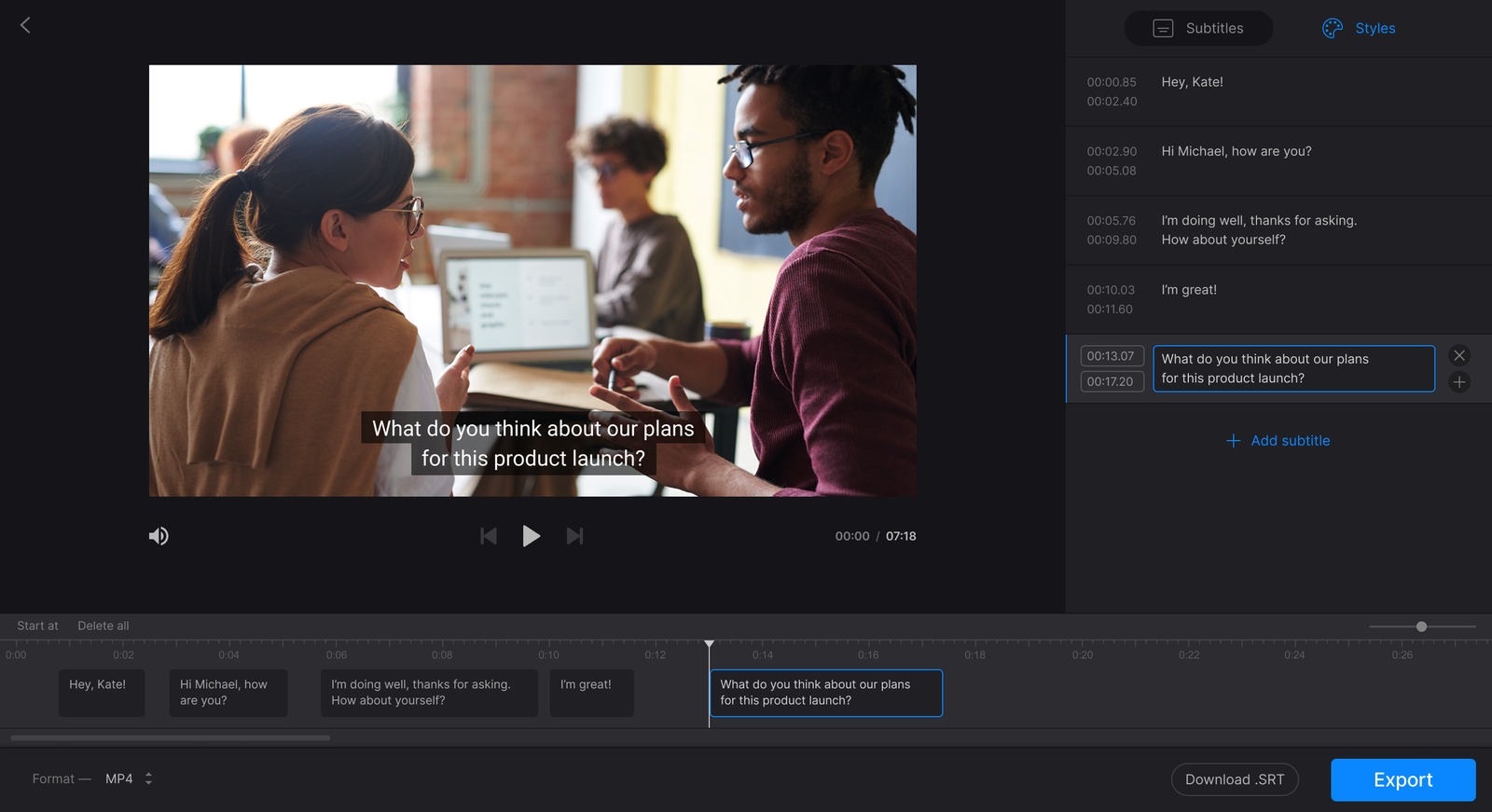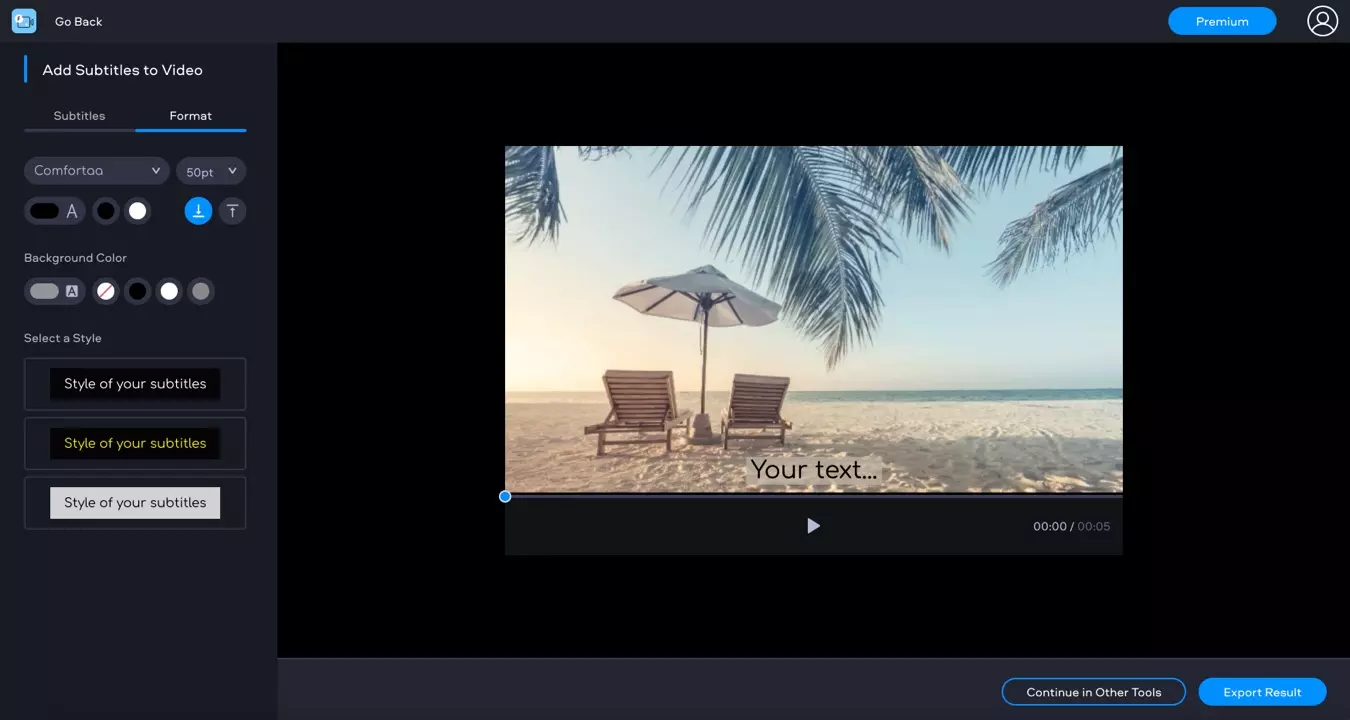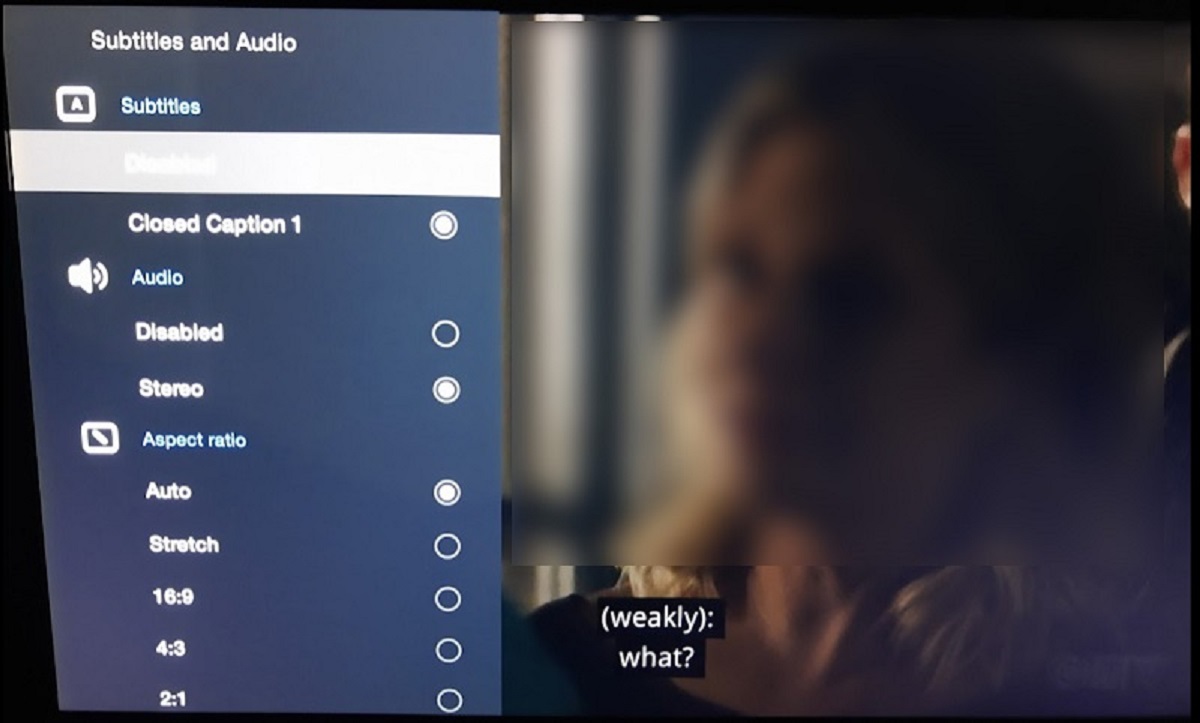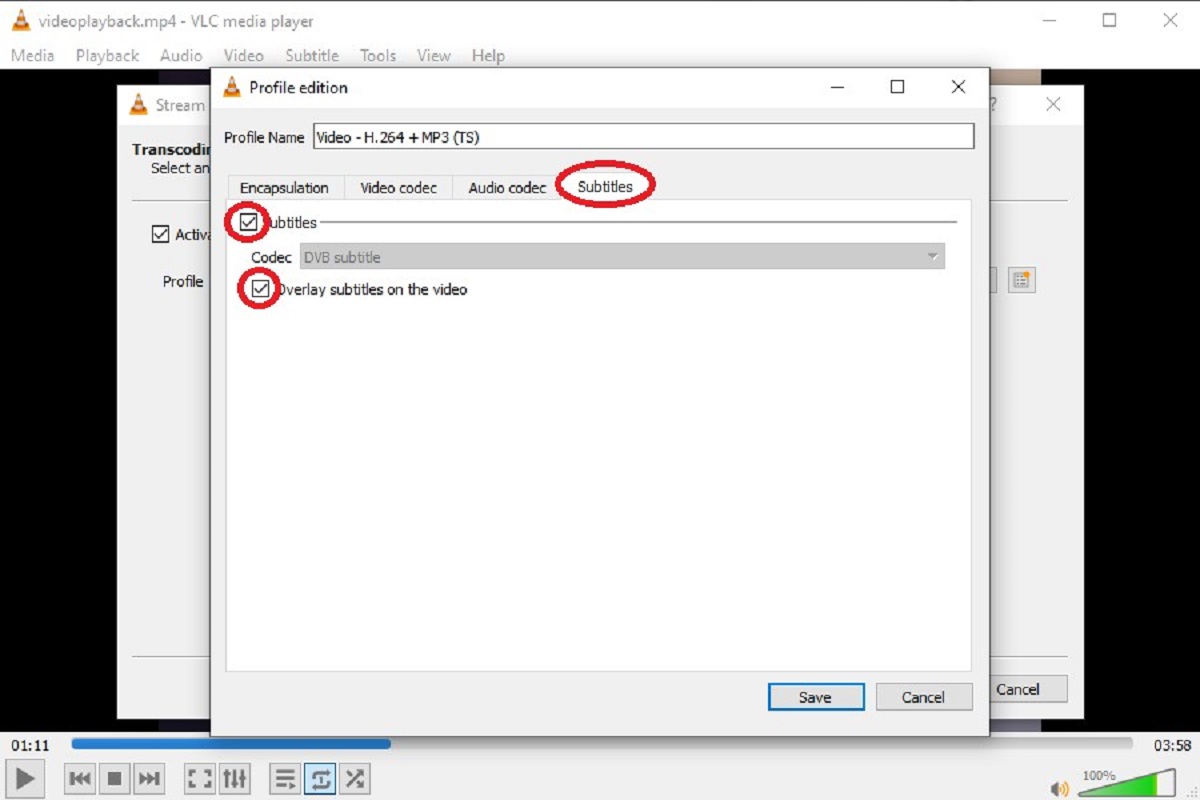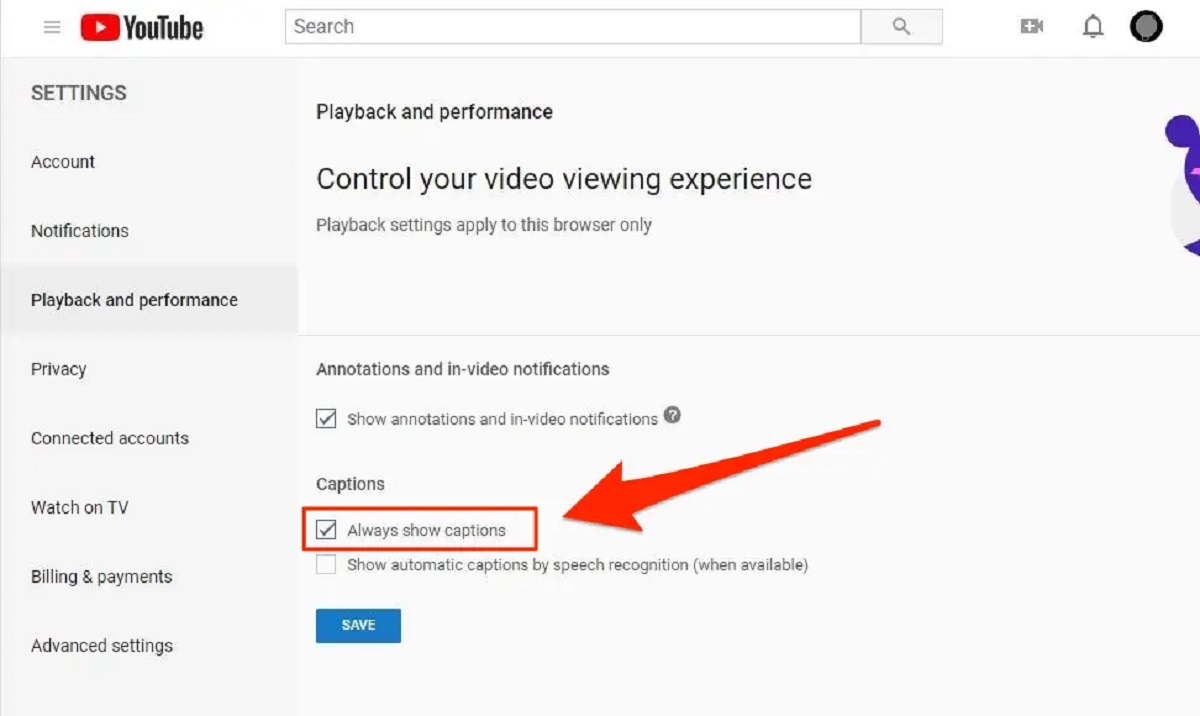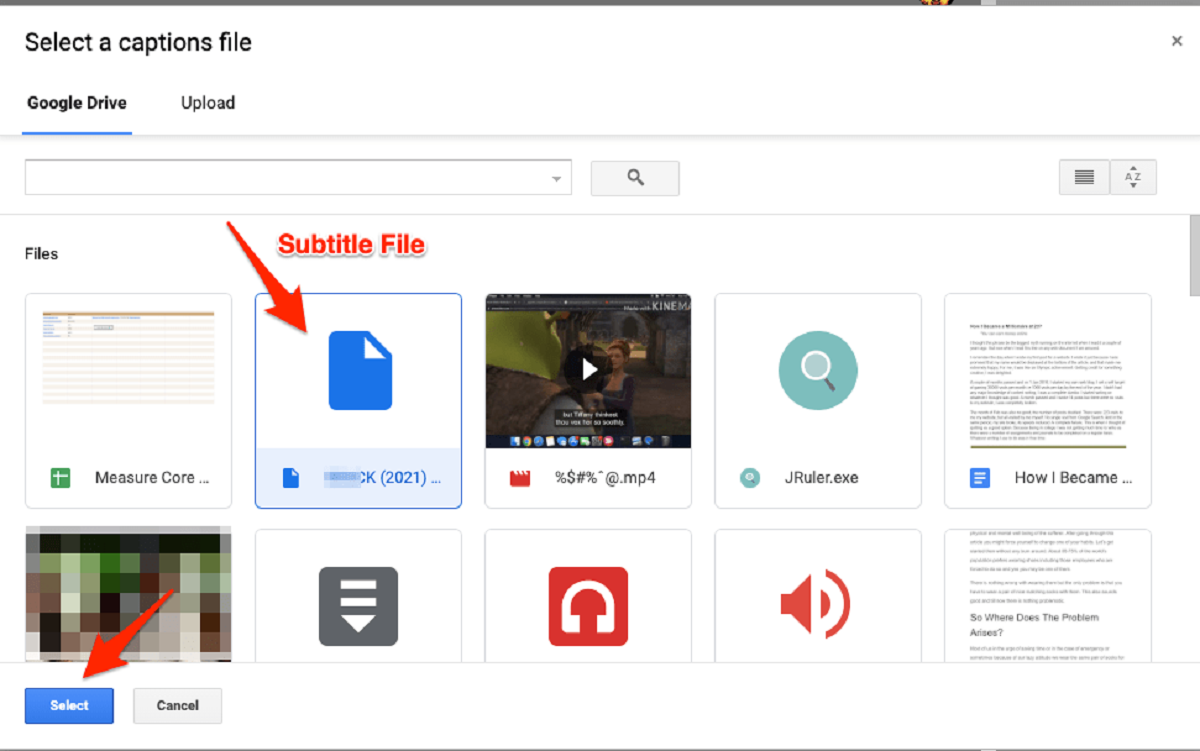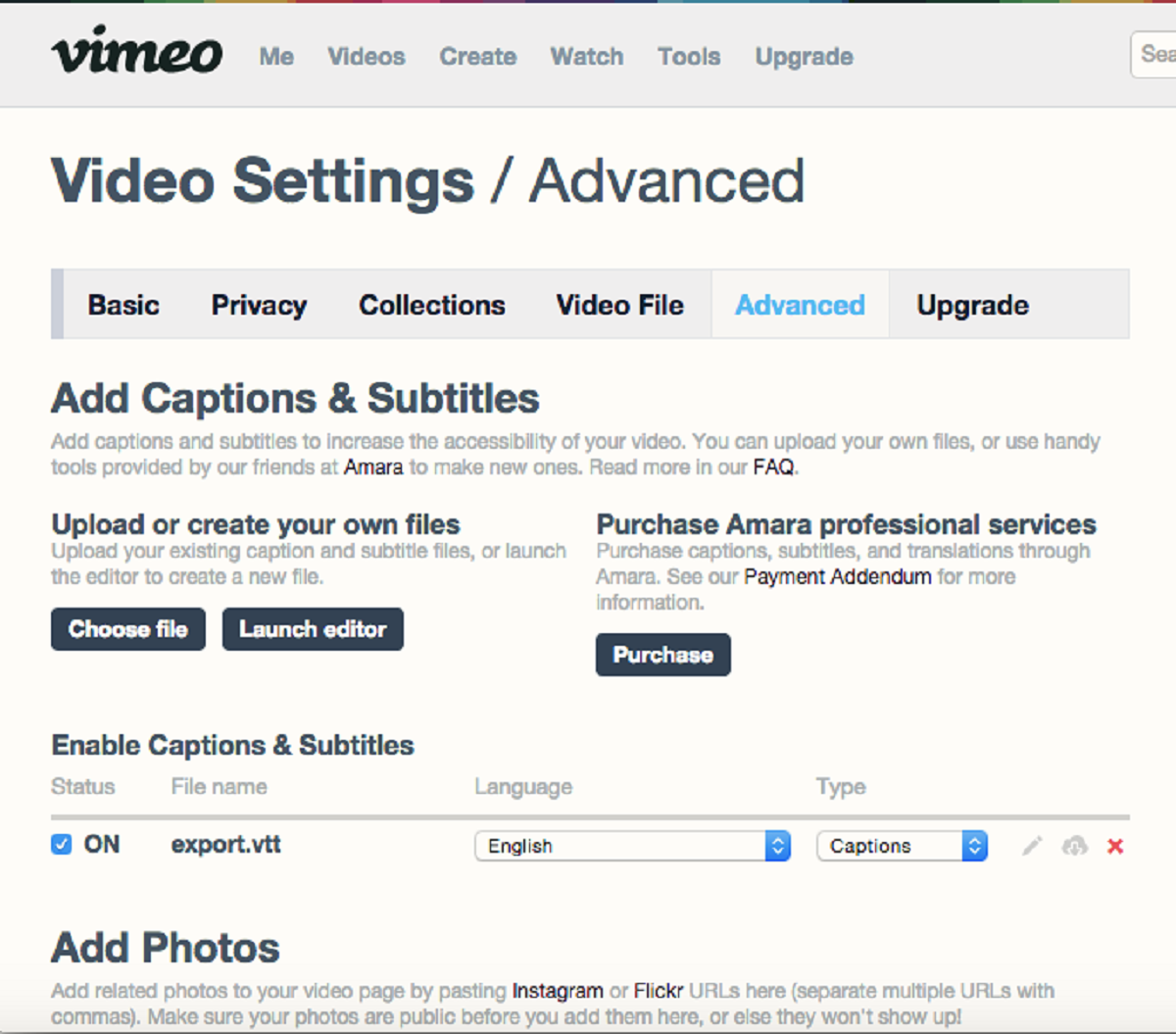Introduction
Synchronizing subtitles is a crucial aspect of the subtitling process that ensures accurate and seamless alignment of subtitles with the corresponding audio or video content. Subtitles play a vital role in enhancing the accessibility and understanding of movies, TV shows, and other multimedia content for viewers around the world. When subtitles are out of sync with the audio or video, it can be extremely frustrating for viewers, leading to a poor viewing experience.
Fortunately, there are various methods and tools available to synchronize subtitles effectively, making it possible for viewers to enjoy their favorite content without any disruptions. In this article, we will explore different approaches to synchronize subtitles, ranging from using specialized software to manually adjusting timings and utilizing online tools.
Before we dive into the methods, it’s essential to understand the significance of synchronizing subtitles. The primary goal of subtitles is to convey the dialogue and other relevant audio information accurately to viewers who may have difficulty hearing or understanding the spoken language. When the subtitles are perfectly synchronized with the audio or video, viewers can follow the conversations and comprehend the content effortlessly.
Imagine watching a movie where the subtitles appear too early or too late, making it challenging to follow the dialogue or missing crucial information. This can be highly frustrating and may even lead to misinterpretations or misunderstandings of the content. Therefore, ensuring proper synchronization of subtitles is essential for delivering a seamless and enjoyable viewing experience.
In the following sections, we will explore different methods and techniques you can employ to synchronize subtitles effectively, enabling viewers to enjoy the content with accurate and well-timed subtitles. Whether you are a professional subtitler or a casual viewer who wants to adjust subtitles for personal use, these methods will help you achieve synchronization in no time.
Why Synchronizing Subtitles is Important
Synchronizing subtitles is more than just a technical aspect of subtitling. It is a crucial element that greatly impacts the viewing experience and accessibility of multimedia content. Here are several reasons why synchronized subtitles are essential:
1. Enhanced Accessibility: Synchronized subtitles allow individuals with hearing impairments or language barriers to fully understand the audio or dialogue. It provides equal access to information and ensures that everyone can enjoy the content, regardless of their hearing abilities.
2. Improved Comprehension: Accurate synchronization of subtitles helps viewers follow the dialogue in real-time, enhancing their comprehension of the content. It prevents confusion and ensures that viewers don’t miss out on crucial information or context.
3. Language Learning Aid: Synchronized subtitles can be a valuable tool for language learners. By aligning the subtitles with the audio, learners can associate the written words with the spoken language, improving their language skills and vocabulary.
4. Audience Expansion: Subtitling content in different languages allows content creators to reach a broader audience globally. Synchronizing subtitles enables content to be understood by viewers who don’t speak the original language, increasing the overall viewership and engagement.
5. Cultural Appreciation: Subtitles ensure that cultural nuances and references are accurately conveyed to viewers, allowing them to appreciate and understand the content in its intended context. Synchronizing subtitles is crucial to preserve the authenticity and originality of the content.
6. Viewing Comfort: Watching a video with subtitles that are out of sync can be distracting and frustrating. Proper synchronization ensures that subtitles appear at the right moment, maintaining the viewer’s focus on the content without any unnecessary distractions.
7. Professional Standards: Filmmakers, broadcasters, and content creators strive to maintain high-quality standards, which include accurate subtitle synchronization. A well-synchronized subtitle track reflects professionalism and attention to detail, enhancing the overall perception of the content.
Synchronizing subtitles effectively is vital for delivering an inclusive, immersive, and enjoyable viewing experience for all. Whether for accessibility purposes, language learning, or expanding the audience reach, synchronized subtitles play a significant role in bridging communication gaps and ensuring equal access to content worldwide.
Methods for Synchronizing Subtitles
When it comes to synchronizing subtitles, several methods can be employed, depending on the level of precision required and the tools or resources available. Here are four common methods for synchronizing subtitles:
1. Using Subtitle Synchronization Software: Subtitle synchronization software, such as Subtitle Edit and Aegisub, provides a range of features and tools specifically designed for adjusting subtitle timings. These programs allow you to easily modify the start and end times of subtitles, adjust synchronization by frame or millisecond, and even perform batch adjustments for multiple subtitles simultaneously. This method offers precision and efficiency, making it a preferred choice for professional subtitlers.
2. Manually Adjusting Subtitles Timing: Manual adjustments involve manually editing the subtitle file in a text editor or a dedicated subtitle editing software. By opening the subtitle file, you can modify the timestamp of each subtitle line to match the corresponding audio or video. This method requires careful attention to detail and can be time-consuming, especially for longer subtitle files. However, it provides complete control over the synchronization process and allows for precise adjustments.
3. Using Online Subtitle Synchronization Tools: Online tools, such as Subshifter and SubtitleTools, offer easy-to-use interfaces to adjust subtitle timings. These tools allow you to upload your subtitle file, select the desired synchronization options, and obtain a corrected version of the subtitles. While online tools may not provide advanced features like dedicated software, they are convenient options for quick and simple adjustments, especially for casual users.
4. Editing and Correcting Timestamps in a Text Editor: For those familiar with subtitle file formats, such as SubRip (.srt) or SubStation Alpha (.ssa/.ass), manual editing of the timestamp values can be done in a text editor. By opening the subtitle file and adjusting the start and end times of each subtitle line, you can synchronize the subtitles accordingly. This method requires basic knowledge of the subtitle file format, but it offers flexibility and control over the synchronization process.
It’s important to note that the choice of method may depend on factors such as the complexity of the subtitle file, the required level of precision, and personal preferences. Experimenting with different methods and tools can help you find the most suitable approach for synchronizing subtitles effectively.
In the following sections, we will explore each method in more detail, providing step-by-step instructions and additional tips to help you achieve accurate synchronization of subtitles.
Method 1: Using Subtitle Synchronization Software
Subtitle synchronization software is a powerful tool for adjusting subtitle timings with precision and efficiency. This method is particularly useful for professional subtitlers or individuals working with large subtitle files. Here’s how you can synchronize subtitles using subtitle synchronization software:
Step 1: Select the Software: Choose a subtitle synchronization software that suits your needs. Popular options include Subtitle Edit and Aegisub, which offer a wide range of features and compatibility with various subtitle file formats.
Step 2: Open the Subtitle File: Launch the software and open the subtitle file you wish to synchronize. Most subtitle synchronization software supports common file formats such as SubRip (.srt), SubStation Alpha (.ssa/.ass), and more.
Step 3: Adjust Subtitle Timings: Once the subtitle file is loaded, you will see a list of subtitle lines with their respective start and end times. Select the subtitle lines that need synchronization and use the provided tools to adjust the timing. You can manually enter new time values, move the subtitles forward or backward in time, or even stretch or compress the overall subtitle duration.
Step 4: Preview and Fine-tune: Most subtitle synchronization software includes a built-in player that allows you to preview the synchronized subtitles in real-time. Utilize this feature to ensure the accuracy of the synchronization. If any adjustments are needed, go back to the subtitle timings and fine-tune until the synchronization is perfect.
Step 5: Save the Synchronized Subtitles: Once you are satisfied with the synchronization, save the synchronized subtitles as a new subtitle file, keeping the original file intact. It’s always a good practice to create a backup and retain the original subtitles in case further adjustments are required.
By using subtitle synchronization software, you can streamline the process of synchronizing subtitles, ensure accuracy, and save valuable time. These software options offer advanced features like waveform displays, automatic synchronization algorithms, spell-checking, and more, making the subtitle synchronization task more efficient and precise.
Remember to refer to the software’s documentation or online tutorials for specific instructions on using the chosen software effectively. Each software may have its own unique interface and set of features, so understanding its capabilities will help you make the most of the subtitle synchronization process.
Method 2: Manually Adjusting Subtitles Timing
If you prefer more control over the subtitle synchronization process or don’t have access to subtitle synchronization software, manually adjusting subtitle timing is a viable method. Although it requires more effort and attention to detail, it can be highly effective for precise synchronization. Follow these steps to manually adjust subtitle timing:
Step 1: Open the Subtitle File: Use a text editor or a dedicated subtitle editing software, such as Sublime Text or Notepad++, to open the subtitle file you want to synchronize. Most subtitle files are in commonly used formats like SubRip (.srt) or SubStation Alpha (.ssa/.ass).
Step 2: Identify the Timing Errors: Analyze the subtitle timings and identify the lines that are out of sync with the corresponding audio or video. Note the subtitle line numbers that require adjustment.
Step 3: Adjust the Timestamps: Locate the corresponding subtitle lines and manually adjust the start and end timestamps to synchronize them with the audio or video. Be careful to maintain the desired synchronization while modifying the timestamp values.
Step 4: Save the Changes: After adjusting the timestamps, save the modified subtitle file. It is recommended to save it as a new file to preserve the original subtitles and avoid any accidental loss of data.
Step 5: Verify the Synchronization: Test the newly adjusted subtitles by playing the video and verifying that the subtitles now align properly with the spoken words or audio. If further adjustments are necessary, repeat the process for the specific subtitle lines until the synchronization is satisfactory.
Manually adjusting subtitle timing grants you complete control over the synchronization process. By directly modifying the timestamp values, you can ensure precise alignment and eliminate any discrepancies between the subtitles and the audio or video content.
However, manual adjustment can be time-consuming, especially for large subtitle files. It requires careful attention to detail and may require multiple iterations to achieve the desired sync. It is recommended to work in smaller sections at a time to avoid overwhelming yourself.
Always make backups of the original subtitle file before making any modifications. This enables you to revert to the original version or start fresh if needed. Additionally, if you are not familiar with the subtitle file format, it is essential to follow the correct syntax and ensure the integrity of the file structure while making adjustments.
By manually adjusting subtitle timing, you can achieve precise synchronization customized to your specific requirements. While it may require more effort, this method can be an effective solution when other synchronization tools are not available or when you desire complete control over the synchronization process.
Method 3: Using Online Subtitle Synchronization Tools
When you need a quick and convenient solution for synchronizing subtitles, online subtitle synchronization tools can be a valuable option. These tools eliminate the need for software installation and provide a user-friendly interface to adjust timings. Here’s how you can use online subtitle synchronization tools:
Step 1: Identify a Reliable Online Tool: Choose a reputable online subtitle synchronization tool that suits your needs. Popular options include Subshifter and SubtitleTools, which offer simple interfaces and easy-to-follow steps.
Step 2: Upload the Subtitle File: Using the online tool’s interface, upload the subtitle file that requires synchronization. Most online tools support common subtitle file formats like SubRip (.srt), SubStation Alpha (.ssa/.ass), and more.
Step 3: Adjust the Subtitle Timings: Once the subtitle file is uploaded, you will be presented with options to modify the subtitle timings. These options may include delaying or advancing the subtitles by a specific duration or manually adjusting the start and end times of each subtitle line.
Step 4: Preview and Verify the Synchronization: After adjusting the timings, many online tools provide a preview feature to let you check the subtitles’ alignment with the audio or video. Utilize this preview function to ensure the synchronization is accurate and meets your requirements.
Step 5: Download the Synchronized Subtitles: Once you are satisfied with the synchronization, download the synchronized subtitle file provided by the online tool. The tool will generate a new subtitle file that incorporates the adjusted timings.
Online subtitle synchronization tools are typically designed to be user-friendly and accessible to a wide range of users. They offer a convenient solution for synchronizing subtitles without the need for specialized software or technical expertise.
While these tools provide a quick and easy way to synchronize subtitles, they may have limitations compared to dedicated software options. Advanced features such as frame-accurate adjustments or waveform visualizations may not be available. Therefore, online tools are best suited for simple and straightforward subtitle synchronization tasks.
Remember to keep the original subtitle file as a backup and avoid overwriting it with the synchronized version. Preservation of the original file ensures that you can make further adjustments or revert to the original subtitles if necessary.
By utilizing online subtitle synchronization tools, you can achieve quick and hassle-free synchronization of subtitles, making it a viable option for casual users or scenarios where dedicated software may not be readily available.
Method 4: Editing and Correcting Timestamps in a Text Editor
If you are comfortable working with subtitle file formats and prefer a more hands-on approach, manually editing and correcting timestamps in a text editor can be an effective method for subtitle synchronization. This method provides flexibility and fine-grained control over the timing adjustments. Here’s how you can use a text editor to edit and correct timestamps:
Step 1: Open the Subtitle File: Use a text editor, such as Notepad or Sublime Text, to open the subtitle file you want to synchronize. Most subtitle files use formats like SubRip (.srt) or SubStation Alpha (.ssa/.ass), which can be opened and edited in any text editor.
Step 2: Identify the Timing Errors: Analyze the subtitle file and identify the subtitle lines that require adjustment. Note the line numbers or timestamps that need correcting.
Step 3: Adjust the Timestamps: Locate the subtitle lines and manually modify the start and end timestamps to synchronize them with the audio or video. Ensure that the timestamp format follows the syntax specified in the subtitle file format.
Step 4: Save the Changes: After making the necessary adjustments, save the modified subtitle file. It is recommended to save it with a new file name, preserving the original file for backup purposes.
Step 5: Verify the Synchronization: Play the video with the modified subtitles and verify that the subtitles align correctly with the spoken words or audio. If further adjustments are needed, repeat the process until the synchronization is accurate.
Editing and correcting timestamps in a text editor provides granular control over the subtitle synchronization process. It allows you to directly modify the timestamps, ensuring precise alignment with the audio or video content.
Be cautious while making modifications to the subtitle file, as any incorrect changes can affect the overall synchronization or render the file unreadable. Familiarity with the subtitle file format and adherence to the syntax rules are crucial for successful manual editing.
Always maintain a backup of the original subtitle file before making any modifications. This enables you to revert to the original version or start afresh if needed. Additionally, keep in mind that manual editing can be time-consuming, especially for longer subtitle files, and it requires careful attention to detail.
By using a text editor to edit and correct timestamps, you have the flexibility to tailor the synchronization to your precise requirements. This method is best suited for individuals with experience working with subtitle files and who prefer a more hands-on approach to subtitle synchronization.
Tips for Synchronizing Subtitles Effectively
While synchronizing subtitles, there are several tips and best practices to keep in mind to ensure accurate and seamless alignment between the subtitles and the audio or video content. Follow these tips to synchronize subtitles effectively:
1. Watch the Content As You Sync: Play the video or audio content alongside the subtitles while making adjustments. This will help you synchronize the subtitles in real-time and ensure that they align perfectly with the spoken words or audio cues.
2. Pay Attention to Dialogue Speed and Pauses: Be mindful of the natural rhythm of the dialogue and any pauses or breaks in the audio. Adjust the timing of the subtitles accordingly to maintain a natural flow and readability.
3. Use Shorter Subtitles for Faster Dialogue: When dealing with fast-paced dialogue, it may be necessary to use shorter subtitles to keep up with the speed. Break longer sentences into multiple subtitles, ensuring that each subtitle line is easily readable within the given timeframe.
4. Account for Reading Speed: Consider the average reading speed of your target audience when adjusting subtitle timings. Allow sufficient time for viewers to read the subtitles comfortably without feeling rushed. Take into account different reading abilities and language comprehension levels.
5. Be Mindful of On-Screen Text: If your content contains on-screen text, such as signs or captions, ensure that the subtitles do not overlap with them. Adjust the timings to avoid interference and maintain clarity.
6. Seek Feedback and Test: After synchronizing the subtitles, seek feedback from others or test them on different devices to ensure they display correctly and remain in sync. Feedback from viewers can provide valuable insights for further refinement.
7. Maintain Consistency in Style and Formatting: Keep the subtitle style and formatting consistent throughout the synchronization process. This includes font type, size, color, alignment, and placement. Consistency enhances readability and ensures a professional appearance.
8. Proofread and Edit: Before finalizing the synchronized subtitles, proofread them carefully for any grammatical errors or typos. Ensure that the subtitles accurately convey the intended meaning and maintain proper punctuation and grammar.
9. Test Subtitles on Different Devices: Subtitle synchronization can differ slightly across various devices and media players. Test the subtitles on different platforms, devices, and media players to ensure compatibility and consistent synchronization.
10. Update Subtitles When Necessary: Occasionally, you may need to update or adjust subtitles due to changes in the content, revisions, or new versions. Stay vigilant and keep the subtitles up to date to maintain synchronization and accuracy.
By following these tips, you can synchronize subtitles effectively and ensure a seamless viewing experience for your audience. Remember that subtitle synchronization is an ongoing process, and continuous improvements based on feedback and testing will help you deliver high-quality subtitles.
Conclusion
Synchronizing subtitles is a crucial step in providing an optimal viewing experience for audiences. Accurate subtitle timing ensures that viewers can follow the dialogue seamlessly and understand the content without any distractions. Whether you’re a professional subtitler or a casual user adjusting subtitles for personal use, employing effective methods and techniques is essential for achieving synchronization.
In this article, we explored various methods for synchronizing subtitles, including using subtitle synchronization software, manually adjusting subtitle timing, utilizing online subtitle synchronization tools, and editing timestamps in a text editor. Each method offers its own advantages and can be chosen based on the level of precision required, available resources, and personal preferences.
Additionally, we provided tips for synchronizing subtitles effectively, such as watching the content as you sync, being mindful of dialogue speed and pauses, considering reading speed, and maintaining consistency in style and formatting. These tips help ensure the accuracy and readability of the synchronized subtitles, enhancing the overall viewing experience.
It’s important to remember that subtitle synchronization may require iterations, testing, and adjustments to achieve the desired results. Seeking feedback from viewers and testing subtitles on different devices and platforms can provide valuable insights and help refine the synchronization further.
By taking the time and effort to synchronize subtitles effectively, you contribute to making multimedia content accessible to a wider audience, including individuals with hearing impairments or language barriers. Synchronized subtitles facilitate language learning, enhance comprehension, and enable viewers to enjoy content in their preferred language.
As technology advances and new tools and techniques emerge, the process of subtitle synchronization continues to improve. Staying updated with the latest trends and tools in the field can help you streamline the synchronization process and deliver high-quality subtitles to your viewers.
Remember, subtitle synchronization is an ongoing process that requires attention to detail, precision, and a commitment to providing an inclusive and enjoyable viewing experience for all. With the methods, tips, and best practices discussed in this article, you are equipped to synchronize subtitles effectively and contribute to the accessibility and understanding of multimedia content.







